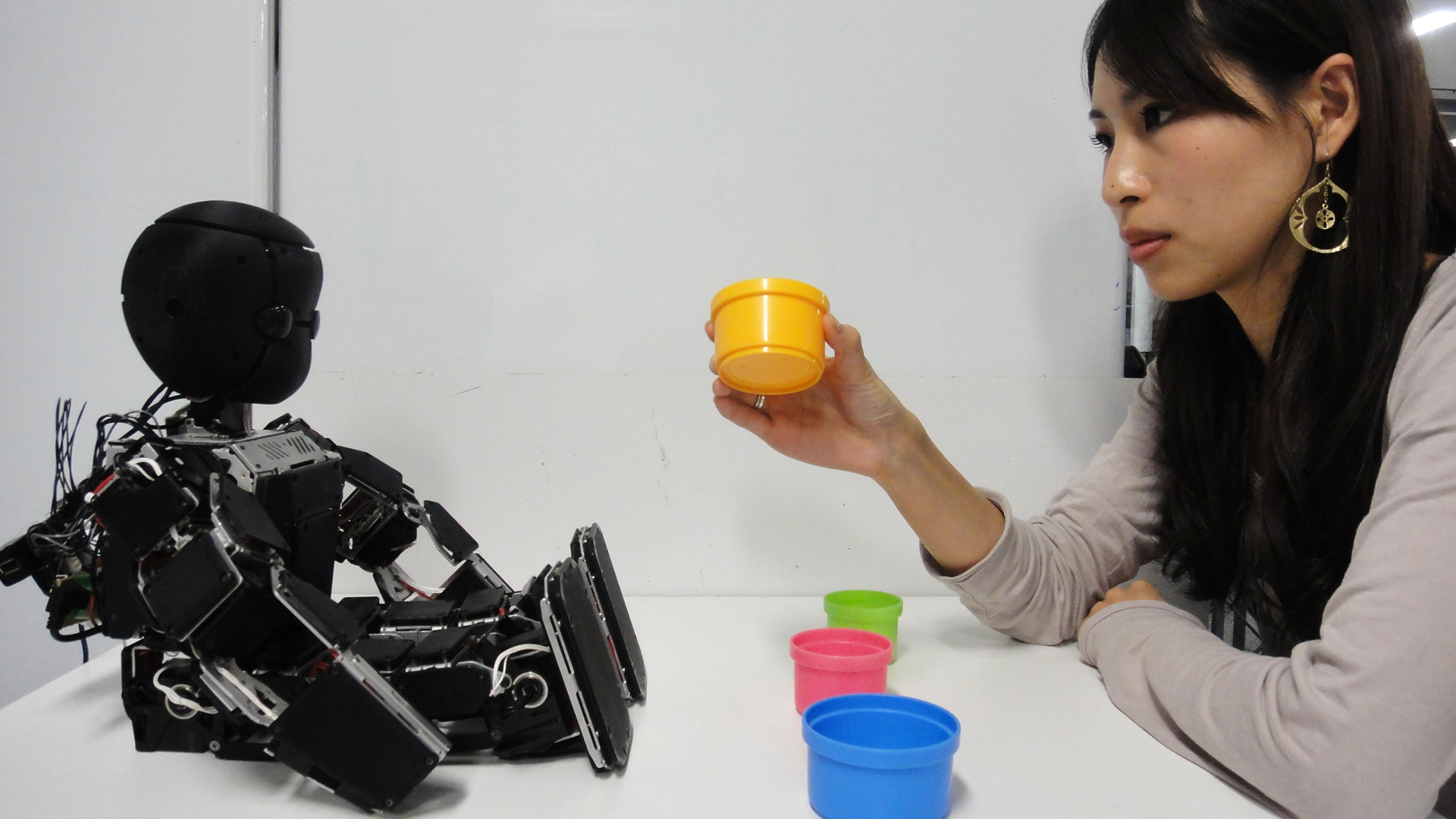
Developmental studies have suggested that human caregivers significantly modify their actions when interacting with an infant compared to with an adult. Such modification called motionese is characterised by higher roundness of movement, longer and more pauses between actions, and closer distance to the infant. However, the underlying mechanisms of motionese and influences of motionese on infant action development are uncovered yet. This study intends to address these issues from computational approach.
Analysis of Motionese Using Infant-like Bottom-up Visual Attention
Developmental studies have suggested that human caregivers significantly modify their actions when interacting with an infant compared to with an adult. Such modification called motionese is characterised by higher roundness of movement, longer and more pauses between actions, and closer distance to the infant. Our analysis of motionese using a saliency-based attention model reveals that motionese has the effect of highlighting important aspects of actions (e.g., the goal of an action) and thus properly guiding infants’ visual attention (Nagai & Rohlfing, 2009).
Designing Robots that Elicit and Learn from Motionese
Developmental studies have suggested that human caregivers significantly exaggerate their actions when interacting with infants, which is called motionese. Open questions are what signals from infants elicit motionese and what advantages infants can take from it in action learning. Our hypothesis is that bottom-up visual attention plays an important role there. We demonstrate how a robot equipped with bottom-up attention elicits motionese and how it can extract action segments from such exaggerated actions (Nagai, 2009; Nagai et al., 2009).
Microscopic Analysis of Infant-caregiver Interaction
Interaction between an infant and a caregiver is dynamic. Both mutually shape the interaction by sending various signals such as gaze, body movement, emotional expressions, and speech. Open questions are when and what signals influence stronger on the partner’s reaction and how the dynamics of interaction changes as infants develop. We investigate the microscopic structure of interaction by measuring the information flow between an infant and a caregiver using transfer entropy (Nagai et al., 2012).